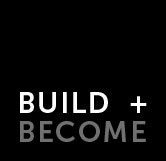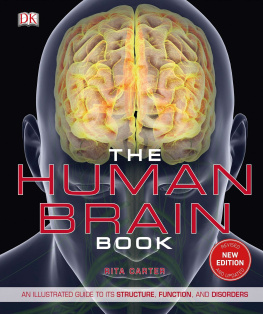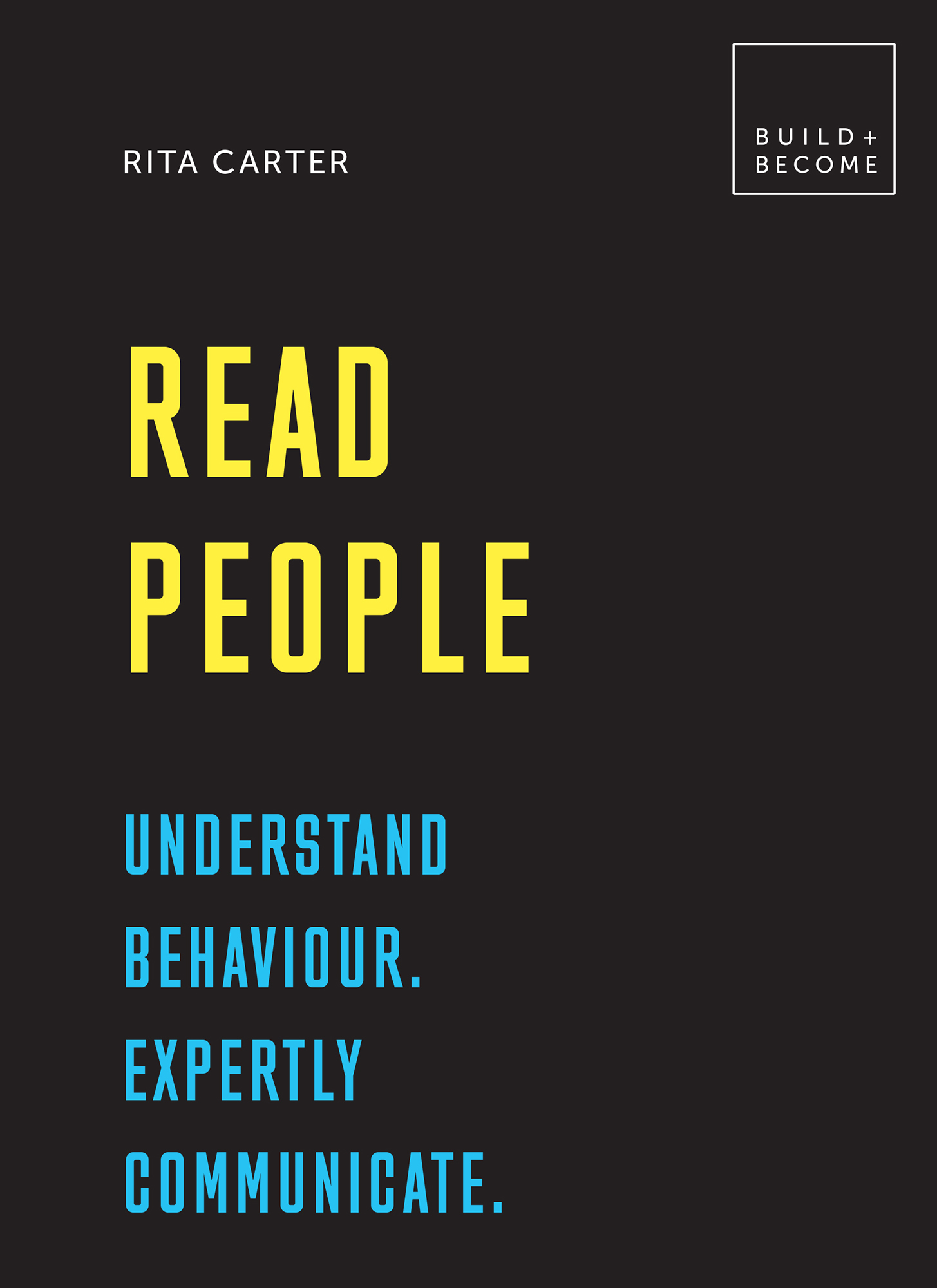READ PEOPLE
UNDERSTAND BEHAVIOUR.
EXPERTLY COMMUNICATE.
RITA CARTER

INTRODUCTION
Reading a person is a bit like reading a book that occasionally breaks into a foreign language. Most of the time we have (or think we have) a fairly good idea of what is going on when we interact with another person. What someone says is what they mean, and what they say they will do is what they do. Then, for some apparently inexplicable reason, they do something else. Such behaviour is perplexing, irritating and frequently hurtful.
Some of these rifts in communication occur because someone deliberately wants to deceive. More often, they happen because the person doesnt know what they think or why they are doing something. This is when it is useful to know that other language the one that is conveyed through the body, by facial expressions and, sometimes, via seemingly irrational behaviour.
Read People is an introduction to that language. It translates the physical signs that tell of a persons life experiences and analyzes their facial expressions, gestures and body language to expose their true feelings and intentions. It also reveals some of the psychological and biological mechanisms that drive people to behave in curious and complicated ways.
Most of these mechanisms are unconscious. In fact, most of what we do and think is unconscious. Most of us know from personal experience that we can do something quite complicated driving a car home or humming a familiar song without consciously attending to it. Recent studies of the unconscious show that it is also capable of forming sophisticated and long-term plans and carrying them out without the person consciously knowing they even have a plan. In one study, participants were primed (informed of something without them realizing it) to cooperate before starting a lengthy and complex interactive game. They subsequently pursued a strategy similar to another group of people who were consciously trying to cooperate. By contrast, a group that had neither been primed nor told to cooperate were competitive throughout.
Similarly, the unconscious assumptions we make about people because they happen to fall into some particular slot in our mental filing system affect how we behave far more than we know. The ability to distinguish friend from foe helped early humans survive, and we make up our mind about people before we even know we have seen them. Looking at why and how this happens, we can learn to use this innate skill without abusing it. These lessons become even more crucial to understand when people come together into a group or crowd, especially in extreme situations when hive or mob psychology becomes dominant.
Read People is not meant to be a full explanation of human behaviour (an impossible endeavour), but provides a series of tools to help you find explanations for yourself. Reading people must always be approached with care, but as the speed and forms of communication in our world become ever faster, these tools are more important than ever.
The assumptions we make about people because they happen to fall into some particular slot in our mental filing system affect how we behave far more than we know.
HOW TO USE THIS BOOK
This book is organised into five parts and 20 key lessons covering the most current and topical debates within behavioural psychology today.

Each lesson introduces you to an important concept,

and explains how you can apply what youve learnt to everyday life.

As you go through the book, TOOLKITS help you keep track of what youve learnt so far.

Specially curated FURTHER LEARNING notes give you a nudge in the right direction for those things that most captured your imagination.

At BUILD+BECOME we believe in building knowledge that helps you navigate your world. So, dip in, take it step by step or digest it all in one go however you choose to read this book, enjoy and get thinking.
YOU ALREADY HAVE THE ABILITY TO READ FACES; ITS BUILT RIGHT INTO YOUR BRAIN.
What you can tell about someone in one tenth of a second.
The face shape associated with domination and dishonesty.
If you look closely into those eyes, you are looking at a brain.
How your life is written on your face.
We are compelled to scrutinize the faces of people who might affect us for information about what they are thinking and feeling.
The human face is the most fascinating object in the world to other humans. It tells us things about its owner as loudly, and sometimes more honestly, than speech or action. We are therefore compelled to scrutinize the faces of people who might affect us for information about what they are thinking and feeling.
Knowing these things about others is of vital importance to us because we live in such a deeply interconnected society. Many of our actions are constrained by others, and reading their faces allows us to adapt our own actions in order to manipulate them, please or appease them.
The loudest signals that come from a persons face are conveyed in expressions voluntary or unconscious movements of the facial muscles. These, combined with speech, are so powerful that they often drown out the more subtle messages that can be seen in the structure of the face itself. We recognize many of the signals intuitively, but often fail to take note of them.
In the first chapter of this book we look at the human face in the way that a paleontologist might examine a fossil deducing behaviour from its physical form rather than from what it does. This section looks at four important lessons.
If you can read a face carefully, by the time a person deliberately starts communicating through expression, speech or gesture you will already have some idea of their history, personality traits and likely behaviour.
 FIRST IMPRESSIONS
FIRST IMPRESSIONSYou already have the ability to read faces; its built right into your brain. The skill is so important that we have evolved a brain system dedicated to face-reading and it works with astonishing speed. Before we are even conscious of seeing a person, an ancient, hard-wired cognitive system makes a complex judgement about them based on the shape, form, proportions and expressions of their face. It decides first whether the person is attractive or repellent, and then whether they are competent, trustworthy, extrovert or dominant. Do you know that feeling of distrust or recoil when you meet a stranger, even one who is behaving impeccably? If you dont, its probably because you override your seemingly inexplicable intuitions about people, preferring to concentrate on more rational ways of judging them.




















